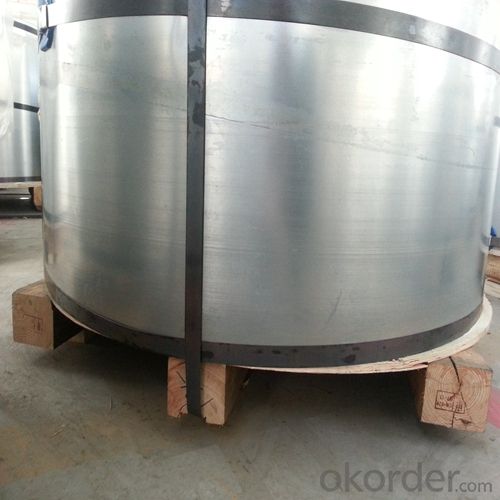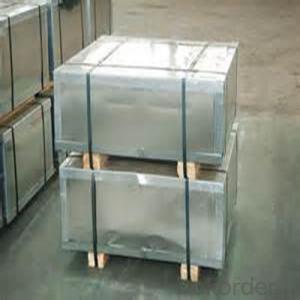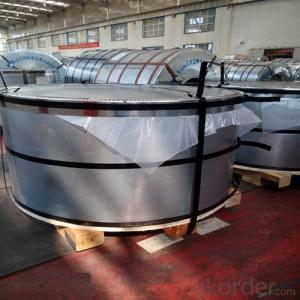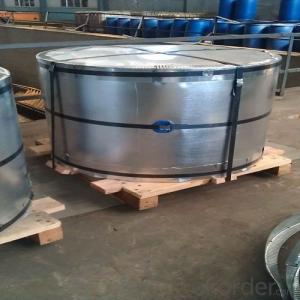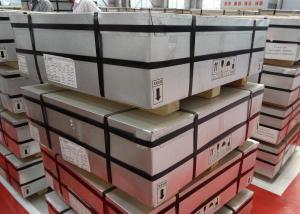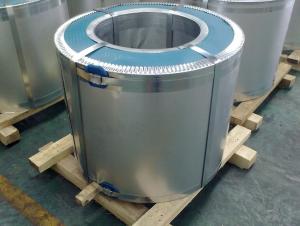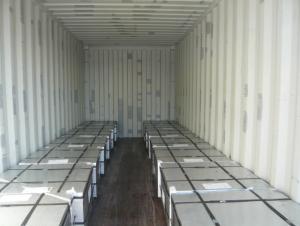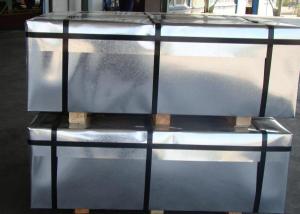Prime Quality Electrolytic Tinplate and TFS for Metal Containers Use 0.30mm Thickness
- Loading Port:
- Shanghai
- Payment Terms:
- TT OR LC
- Min Order Qty:
- 25 m.t.
- Supply Capability:
- 15000 m.t./month
OKorder Service Pledge
OKorder Financial Service
You Might Also Like
Specification
1.Structure of Prime Quality Electrolytic Tinplate and TFS for Metal Containers Use 0.30mm Thickness Description
Tin plate is a thin steel sheet coated by tin. The thin steel sheet on which tin coating is done is known as black plate. Tin has several properties which make it suitable for use as a coating on steel. It has a good resistance to corrosion in a wide range of environments and in particular retains its appearance and surface properties extremely well in indoor atmosphere. It is easily soldered and the good corrosion resistance ensures effective retention of solderability. It is safe in contact with foods, neither producing risks to health nor impairing flavours.
2.Main Features of the Prime Quality Electrolytic Tinplate and TFS for Metal Containers Use 0.30mm Thickness
Appearance – Tinplate is characterized by its beautiful metallic luster. Products with various kinds of surface roughness are produced by selecting the surface finish of the substrate steel sheet.
Paintability and printability – Tinplates have excellent paintability and printability. Printing is beautifully finished using various lacquers and inks.
Formability and strength – Tinplates have got very good formability and strength. By selecting a proper temper grade, appropriate formability is obtained for different applications as well as the required strength after forming.
3. Prime Quality Electrolytic Tinplate and TFS for Metal Containers Use 0.30mm Thickness Images
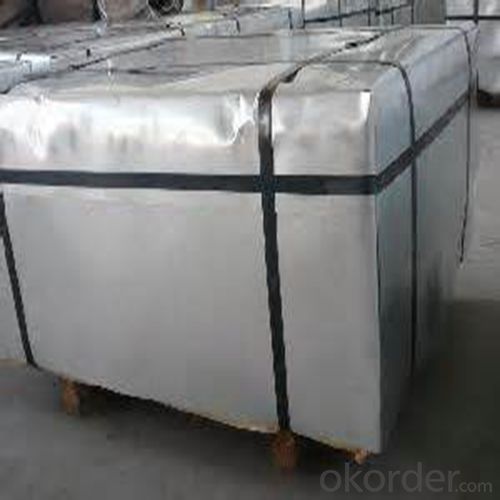

4. Prime Quality Electrolytic Tinplate and TFS for Metal Containers Use 0.30mm Thickness Specification
Specification of :
Standard: ISO 11949 -1995, GB/T2520-2000,JIS G3303,ASTM A623, BS EN 10202
Material: MR,SPCC
Thickness:0.15mm - 0.50mm
Width: 600mm -1150mm
Temper: T1-T5
5.FAQ of Prime Quality Electrolytic Tinplate and TFS for Metal Containers Use 0.30mm Thickness
- What is tinning and how does it work?
Tinning is the process of thinly coating sheets of wrought iron or steel with tin, and the resulting product is known as tinplate. It is most often used to prevent rust.
- Do you only have prime quality tinplate?
We can supply both prime and second quality tinplate.
- Q: How does tinplate perform in terms of resistance to humidity?
- Tinplate performs exceptionally well in terms of resistance to humidity. The tin coating on the steel substrate provides a protective barrier that prevents moisture from reaching the metal, thus minimizing the risk of rust and corrosion. This makes tinplate an ideal packaging material for products that are sensitive to moisture, ensuring their integrity and longevity.
- Q: Can tinplate be used for promotional or gift packaging?
- Yes, tinplate can be used for promotional or gift packaging. Tinplate is a versatile material that is durable, visually appealing, and can be easily customized with various designs. It offers a premium look and feel, making it an excellent choice for creating attractive promotional or gift packaging that can leave a lasting impression on recipients.
- Q: What material is the tin plate, please?
- This kind of galvanized steel in a long time Chinese called "tin", some people think that the tin plate cans was made from the Guangdong province of Macao (English Macao for tinplate imports, readable) so called "tin". There are also other claims, such as Chinese used this lamp of kerosene tin plate manufacturing, shaped like a horse, so called "tin". The name "tin" not exactly, therefore, 1973 Chinese meeting has been upgraded to tin plate tin plate, the official documents will no longer use the name "tin".
- Q: What are the common thicknesses of tinplate?
- The common thicknesses of tinplate range from 0.13mm to 0.49mm, with increments of 0.01mm.
- Q: What are the regulations regarding the use of tinplate in food packaging?
- The regulations regarding the use of tinplate in food packaging vary depending on the country and region. However, in general, tinplate used in food packaging must meet certain safety standards to ensure that it does not contaminate or pose any health risks to consumers. These standards often involve regulations on the composition of the tinplate, such as restrictions on hazardous substances like heavy metals, as well as requirements for coatings or linings to prevent direct contact between the food and the metal. Additionally, labeling requirements may exist to inform consumers about the presence of tinplate in the packaging. It is important for manufacturers and suppliers to comply with these regulations to ensure the safety and quality of food packaging.
- Q: How is tin coating applied to the steel substrate?
- Tin coating is typically applied to the steel substrate through a process called electroplating. In this method, the steel substrate is first cleaned and prepared to ensure proper adhesion of the tin coating. It is then immersed in an electrolyte bath containing tin salts, and an electrical current is applied. The current causes the tin ions to be reduced and deposited onto the steel surface, forming a thin layer of tin coating. This electroplating process helps to improve the corrosion resistance and appearance of the steel substrate.
- Q: What are the different sizes and shapes of tinplate packaging available?
- There are various sizes and shapes of tinplate packaging available, ranging from small tins suitable for single-use items like mints or lip balm, to larger tins used for storing food or other products. Common shapes include round, rectangular, square, and oval tins. Additionally, there are specialty shapes such as heart-shaped tins or tins with embossed designs. The sizes and shapes of tinplate packaging can be customized to meet specific product requirements.
- Q: How is tinplate coated with anti-tarnish materials?
- Tinplate is coated with anti-tarnish materials through a process called passivation. This involves applying a thin layer of protective coating onto the tinplate surface to prevent oxidation and tarnishing. The coating can be made from various materials such as organic compounds or inorganic substances like chrome or zinc, which create a barrier against moisture and other corrosive elements. This helps to maintain the aesthetic appeal and durability of the tinplate over time.
- Q: How does tinplate contribute to sustainable packaging?
- Tinplate contributes to sustainable packaging by being highly durable, recyclable, and resistant to corrosion. It can be reused multiple times, reducing the need for new materials. Tinplate also provides excellent protection to the packaged goods, reducing food waste and extending product shelf life. Additionally, its recyclability helps in reducing the environmental impact by minimizing waste generation and conserving resources.
- Q: How does tinplate contribute to the preservation of photographic equipment?
- Tinplate contributes to the preservation of photographic equipment by providing a protective coating that helps prevent corrosion and damage caused by moisture, dust, and other external factors. Its durable and rust-resistant properties make it an ideal material for manufacturing camera bodies, lens caps, and other components, ensuring the longevity and functionality of the equipment.
Send your message to us
Prime Quality Electrolytic Tinplate and TFS for Metal Containers Use 0.30mm Thickness
- Loading Port:
- Shanghai
- Payment Terms:
- TT OR LC
- Min Order Qty:
- 25 m.t.
- Supply Capability:
- 15000 m.t./month
OKorder Service Pledge
OKorder Financial Service
Similar products
Hot products
Hot Searches
Related keywords



